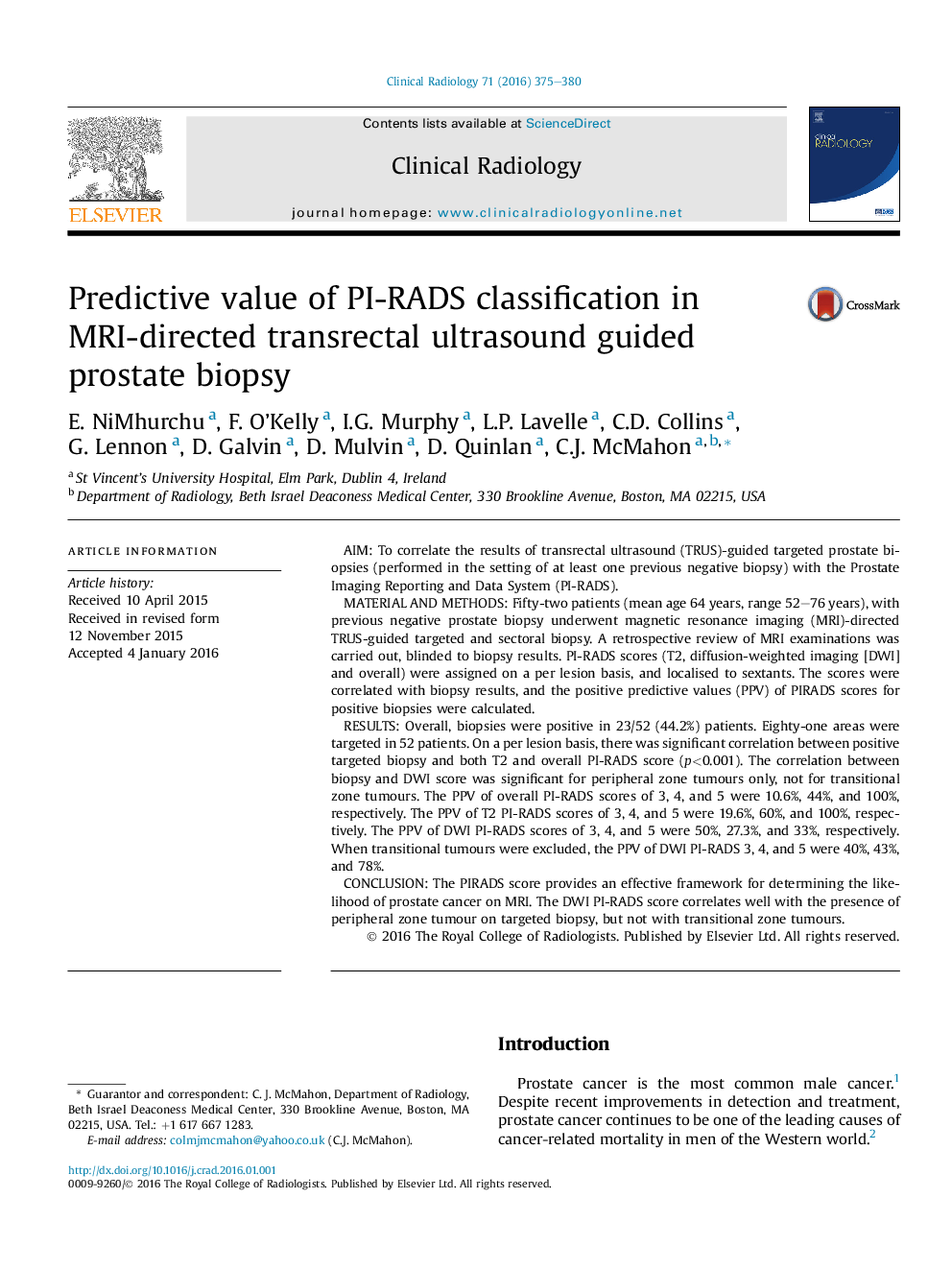| کد مقاله | کد نشریه | سال انتشار | مقاله انگلیسی | نسخه تمام متن |
|---|---|---|---|---|
| 3981403 | 1257681 | 2016 | 6 صفحه PDF | دانلود رایگان |

• In this study, the higher the PI-RADS score, the higher the likelihood of a positive targeted biopsy.
• There is relatively poor correlation of the diffusion weighted imaging component of PIRADS scoring with biopsy result for transitional zone tumours.
• Targeted prostate biopsy with transrectal ultrasound guidance has high yield in patients with high suspicion for prostate cancer based on MRI.
AimTo correlate the results of transrectal ultrasound (TRUS)-guided targeted prostate biopsies (performed in the setting of at least one previous negative biopsy) with the Prostate Imaging Reporting and Data System (PI-RADS).Material and methodsFifty-two patients (mean age 64 years, range 52–76 years), with previous negative prostate biopsy underwent magnetic resonance imaging (MRI)-directed TRUS-guided targeted and sectoral biopsy. A retrospective review of MRI examinations was carried out, blinded to biopsy results. PI-RADS scores (T2, diffusion-weighted imaging [DWI] and overall) were assigned on a per lesion basis, and localised to sextants. The scores were correlated with biopsy results, and the positive predictive values (PPV) of PIRADS scores for positive biopsies were calculated.ResultsOverall, biopsies were positive in 23/52 (44.2%) patients. Eighty-one areas were targeted in 52 patients. On a per lesion basis, there was significant correlation between positive targeted biopsy and both T2 and overall PI-RADS score (p<0.001). The correlation between biopsy and DWI score was significant for peripheral zone tumours only, not for transitional zone tumours. The PPV of overall PI-RADS scores of 3, 4, and 5 were 10.6%, 44%, and 100%, respectively. The PPV of T2 PI-RADS scores of 3, 4, and 5 were 19.6%, 60%, and 100%, respectively. The PPV of DWI PI-RADS scores of 3, 4, and 5 were 50%, 27.3%, and 33%, respectively. When transitional tumours were excluded, the PPV of DWI PI-RADS 3, 4, and 5 were 40%, 43%, and 78%.ConclusionThe PIRADS score provides an effective framework for determining the likelihood of prostate cancer on MRI. The DWI PI-RADS score correlates well with the presence of peripheral zone tumour on targeted biopsy, but not with transitional zone tumours.
Journal: Clinical Radiology - Volume 71, Issue 4, April 2016, Pages 375–380